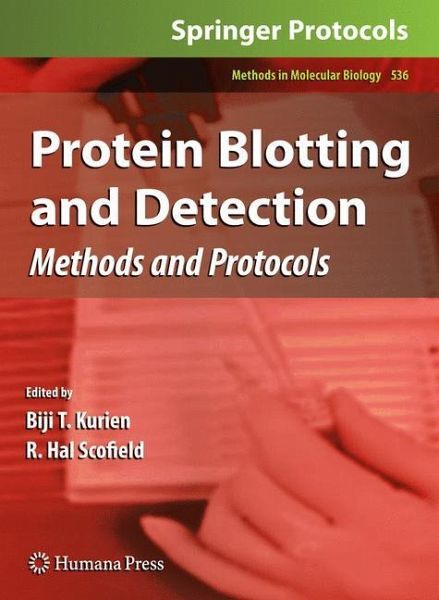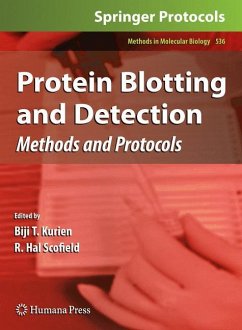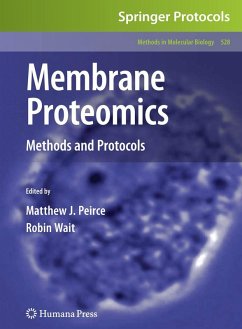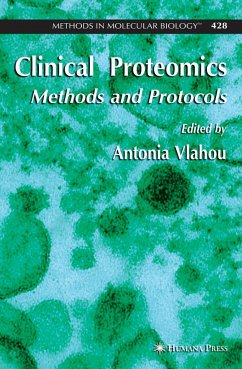
Protein Blotting and Detection
Methods and Protocols
Herausgegeben: Kurien, Biji T.; Scofield, R. Hal

PAYBACK Punkte
64 °P sammeln!
Over the past thirty years, the development of the Western blot has revolutionized the fields of biomedical research and medical diagnostics. In "Protein Blotting and Detection: Methods and Protocols", expert researchers present numerous techniques based on the Western blot, providing detailed, readily reproducible methods, tips, and alternatives directly and easily transferable to the laboratory setting. Chapters offer a large number of variations on the theme of protein transfer to solid support followed by detection, presenting both adaptations of traditional techniques as well as completely original methods of protein blotting. Composed in the highly successful Methods in Molecular Biology(TM) series format, each chapter contains a brief introduction, a list of necessary materials, step-by-step methods, and a Notes section which shares tips on troubleshooting and avoiding known pitfalls.
Innovative and highly practical, Protein Blotting and Detection: Methods and Protocols is an essential, hands-on guide for all investigators who hope to bring these cutting-edge procedures home to their laboratories.
Innovative and highly practical, Protein Blotting and Detection: Methods and Protocols is an essential, hands-on guide for all investigators who hope to bring these cutting-edge procedures home to their laboratories.












